Designer(s) Lawrence R. Sims | System(s) Custom | |
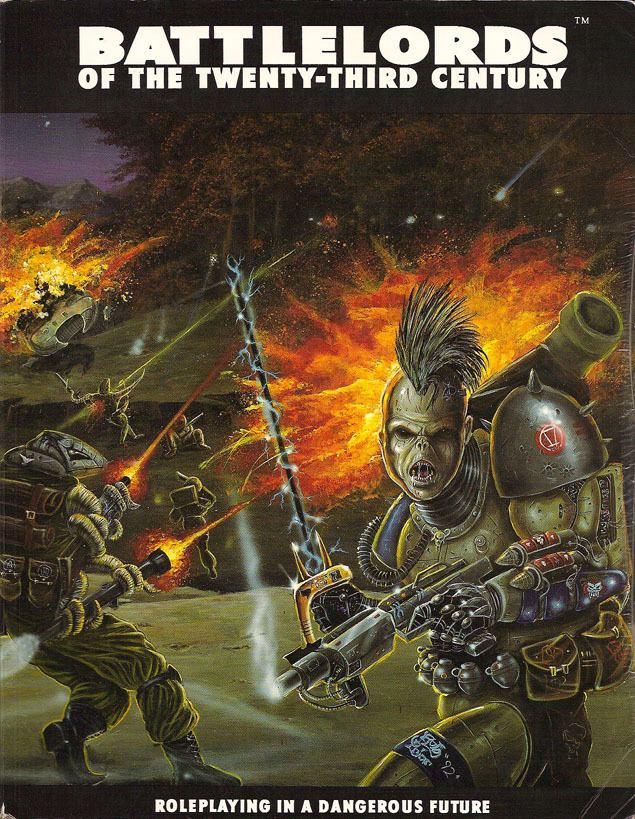 | ||
Publisher(s) Optimus Design Systems (1990–1998)SSDC, Inc. (1999-present) Publication date 1990 (1st edition)1990 (2nd edition)1991 (3rd edition)1992 (4th edition)1993 (5th edition)2000 (6th edition) Genre(s) Science fiction, Space Opera | ||
Battlelords of the Twenty-Third Century is a paper and pencil science fiction role-playing game designed by Lawrence R. Sims and first published in 1990. The game's tagline is Roleplaying in a dangerous future. The Battlelords of the Twenty-Third Century license was later sold by Optimus Design Systems (ODS) to SSDC, Inc. in September 1999.
Contents
- Setting
- Races
- Alliance Races
- Additional Player Races
- Non Player Races
- Locations
- System
- Character Statistics and Skills
- Growing Up
- Combat
- Other system features
- History
- Supplements
- Modules
- Spinoffs
- References
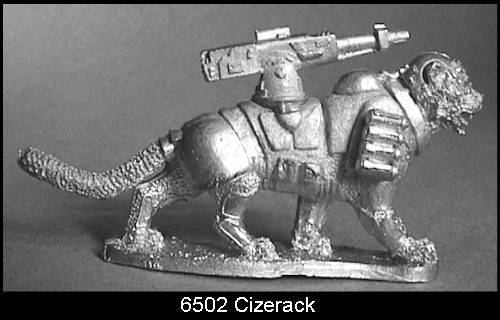
Setting
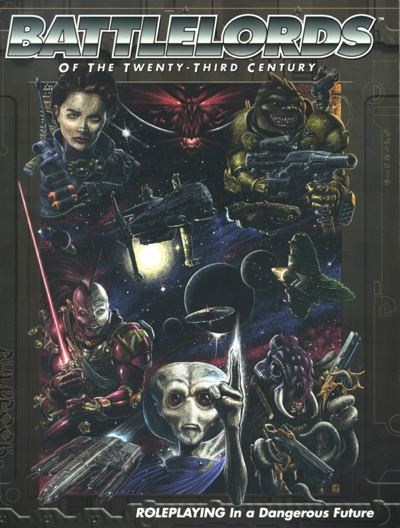
Battlelords of the Twenty-Third Century is set in the year 2279. The territory of the Galactic Alliance, spanning several galaxies, is the primary setting for the game. The Galactic Alliance is made up of twelve races (including Humans), and is run behind the scenes by huge mega-corporations seeking to exploit the farthest reaches of space.
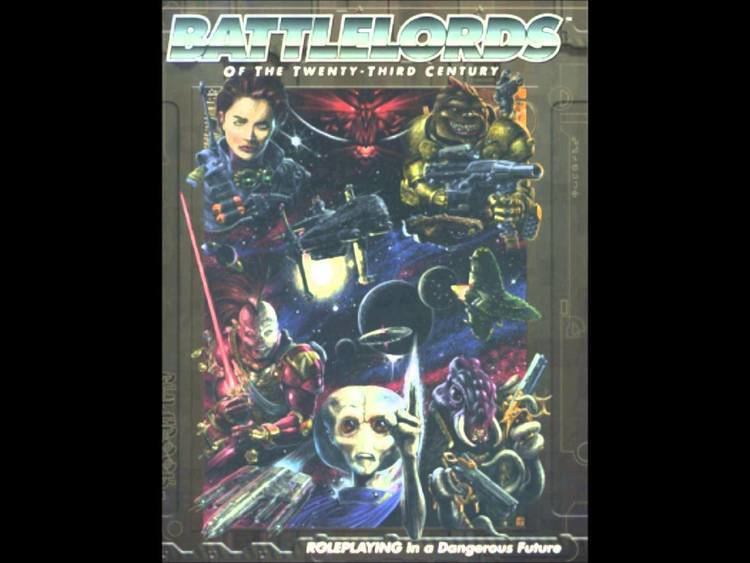
Player characters usually assume the role of Battlelords, mercenaries employed by the corporations to further their business by any means, legal or otherwise. They face various challenges, including rival mercenaries, Rebels, hostile alien lifeforms on unexplored worlds, and the alien race known as the Arachnids.
Races
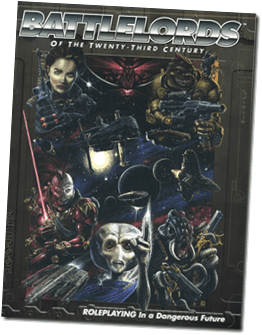
There are many alien races in the Battlelords universe, but twelve are presented in the basic rulebook and form the basis for the Galactic Alliance.
Alliance Races
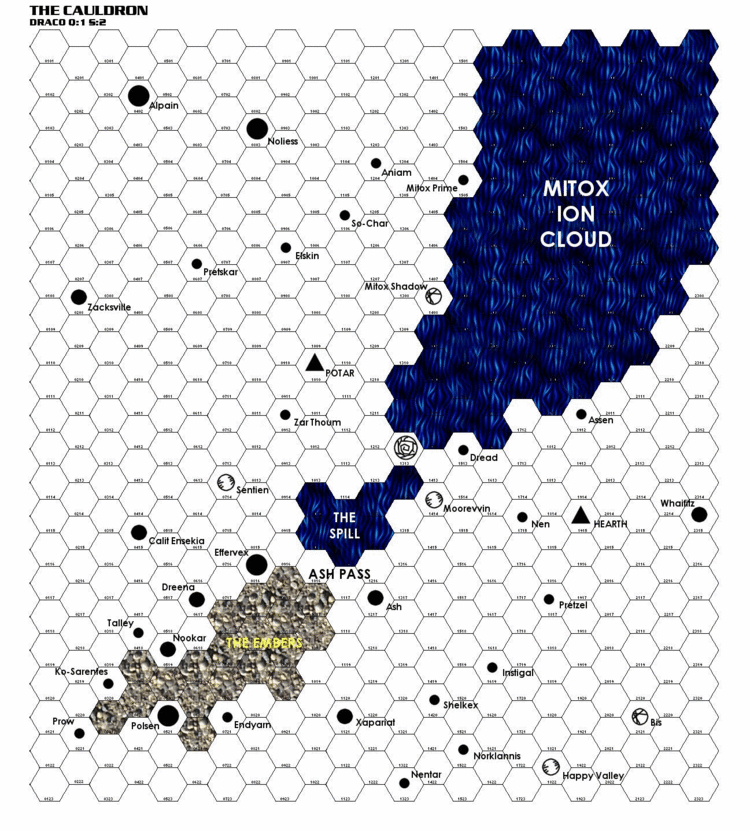
The Tolude are the most common Eridani to meet offworld as their function often requires it. Vax only leave their world to go on campaign with the military, work as a mercenary, or perform a warrior pilgrimage. Mudig cannot leave their homeworld unless they are on campaign with the military; those who show great bravery and self-sacrifice are adopted by a childless Tolude family or allowed to marry into the Tolude caste.
After the Second Holocaust, the Human race had a low birth rate. Genetic research was used to ensure fertilization and edit out non-beneficial traits like mutations, diseases, and disorders in-vitro. This led to the ability to pre-select which positive traits a child would inherit (or insert new traits). Then biomedical corporations began breeding vat-grown genetically enhanced human clones to serve as loyal bodyguards, servants, and playthings for wealthy Humans. This was later expanded to supply semi-skilled or skilled workers for corporations and soldiers for the military, which began preferring them to Humans.
Human frustration and fear gave way to bigotry. This led to the Gen Wars in 2075 AD, in which Human Supremacy groups and angry or panicked mobs attacked and killed real or suspected Gen-Humans. The Gen-Humans and their supporters fought back and a bloody stalemate occurred.
This lasted until 2083 AD, when the United Earth government created the Genetics Laws. It set the Gen-Human population at no more than 15% of the total Human population and created Human quotas and Gen-Human limits for all jobs and professions. It also forced Gen-Humans to be registered; the manufacturer's symbol, model name and serial number barcode is imprinted on their body and encoded in their DNA "junk genes" to aid in identification. In return, Gen-Humans were considered a sentient race rather than property and they were extended similar rights to other sapient beings.
Although superior to baseline humans, Gen-Humans are treated as second-class citizens by Humans, who view them as unsettling "things" rather than real "people". However, their superior abilities mean that they often hold high offices in the Alliance or major corporations. Because all Gen-Humans of the same model are identical, they tend to develop identity problems. To combat this, they develop quirks or unique identifiers to separate themselves from the others. Gen-Humans of the same model have difficulty forming large social groups because of this.
Gen-Humans tend to breed true. If two Gen-Humans breed, their offspring will be one parent's genotype. Even if they marry Humans, their offspring will be the same model as themselves. This lack of genetic diversity is seen as an evolutionary weakness.
A worldwide nuclear war at the dawn of Earth's 21st Century (dubbed the "Second Holocaust") killed 3 billion Humans worldwide and damaged Earth's climate with a "nuclear winter". A Mutzachan scout ship drawn to the high radiation readings made first contact with some survivors. A rescue mission used high technology to stabilize the environment in exchange for the rights to extract the radioactive waste left behind at the impact craters. Eventually terraforming technology restored the planet, but most Humans who were able to had already left for the stars.
Humans, like most emigre communities, feel a nostalgic connection for the place they are from, but few actually want to go back. Pacifism is a popular and widespread belief-system due to the Second Holocaust; however, few Humans are total pacifists and most see it as a philosophy rather than a way of life. They also have a sort of "Manifest Destiny" belief that they are destined to control the Alliance someday because of their unique qualities; the other Alliance races think this belief is adorable.
I-Bots have poor intuition, relying on rigid pre-programmed tactics or protocols to deal with problems. Unforeseen problems or multiple potential actions force the I-Bot to pause to analyze the situation and decide on the best option. I-Bots who are damaged have to be repaired and cannot heal on their own. Artificial intelligences are not considered true lifeforms by the Alliance and are therefore considered the property of the corporation or organization that purchased them.
They usually perform jobs that are too hazardous or dangerous for sentient beings and require specialized knowledge or training, super-strength, and precise reflexes (like starcraft crew, powerplant maintenance, scientific research, star-mapping and planetary exploration, etc.). On the other hand, some hazardous tasks like war and colonization are best done using cheap fleshy beings rather than expensive machines.
Additional Player Races
Hostile
The following races are hostile to the Alliance.
Their original homeworld suffered a catastrophe that made it unable to support life, so they colonized new planets. They are fanatically environmentalist, so they trade or raid for all the resources they need. They are rather hypocritical, as they despise other races for abusing their own planets, yet see nothing wrong with polluting, exploiting, or damaging the ecosystems of alien-controlled worlds.
The planet is ruled by a militocracy made up of 26 Clans. Each Clan is ruled by a leader selected from the premier raiders, warlords, and merchants of each Clan. Over them is an annually elected ruler (Athyan, or "All-lord") assisted by a council of advisers (Inbaltho, or "Many Eyes") made up of former rulers. Each Clan has its own military and they compete to see which Clan will bring home the most plunder.
Uncle Ernie seeded the race on Delphix-9 of the Netas Hydri star system in the And-3 galaxy, just as it was declared Alliance space but before it could be settled. When the Alliance first tried to colonize the planet, the Fott initiated a guerrilla war with them. Settlements were under constant siege and a war of attrition began. An Alliance fleet was dispatched to eradicate the Fott from orbit, but Human and Zen ambassadors were able to negotiate a conference that led to the Fott surrendering after signing a treaty. The Alliance set up an agency called the Fott Welfare Administration (FWA) whose purpose is to educate, house, care for and feed its clients until they are judged able to be fully assimilated into Alliance society.
The Fott resent the Alliance and resist any attempt to govern or control them. They are organized in extended family-based social groups called Kin. Kins will feud with each other but will unite against non-Fott enemies. Fott live in rural agrarian communes in which they own the land and automated machines, subjugated laborers, and domesticated animals farm it for them. The Fott have resisted any attempts to get them to liberate their workforce and have threatened a civil war if the matter is pushed too far.
Fott are omnivores who love to hunt; if an animal is inedible, they will hunt it for sport. Fott display their hunting prowess by either stuffing and mounting the bodies of their prey or making craft items and furniture out of them. These trophies are displayed in their living quarters in a special area called a "den". They collect firearms, preferring gunpowder-based projectile weapons because they require great skill to use and it is easier to recover usable prey after a kill. Some Fott hunters use archaic projectile weapons like crossbows, slingshots, or muskets to make it more challenging.
Fott often find work as mercenaries because it allows them to legally work out their aggressions on outsiders and blow things up while they get paid to do it. Fott mercenaries will often collect and trade trophies like enemy weapons, spent ammo casings or power cores, dud or defused munitions, etc.; they often learn everything they can about the objects they collect. Since Fott are furry, there is an aversion to using flame-throwers or energy weapons.
Ferron is a "Shade World", a cross-dimensional planet in and out of phase with our dimension. As a side-effect of their evolution, the Kizanti have learned to dimensionally "displace" themselves, making themselves invisible and intangible at will. They carry a ritual marker they are attuned to that they leave behind while phasing to help center themselves for the return jump. This can be anything from a "pet rock" to a 1963 Pontiac Tempest
The Kizanti were originally a primitive race of hunter/gatherers. They were protected by the Shade effect, which hid their world from outsiders. A Phentari expedition to the Karanies system discovered the world when it was in-phase and conquered and enslaved the population. Before they left, they massacred them so they couldn't tell Alliance authorities about their actions - a time called the Great Carnage by the survivors. Afterwards, a survival of the fittest mentality took over the race, which weeds out weak offspring so that only "true" Kizanti can live to pass on their genes. They spend their lives training as warriors and assassins, with little time for leisure activities. They have unknown patrons that provide training and support - probably in exchange for their services.
The Kizanti favor aggressive or provocative clothing that is designed to attract attention. They are adept at many types of weapons, but prefer using ritual high-quality bladed weapons that are covered in richly inlaid engravings (especially when killing Phentari). Warriors wear their hair in a short, stiff mohawk to indicate their status. Kizanti assassins have prosthetic earlobes, implanted contact lenses, and wear their hair long so they can pass for Human. Although the Kizanti have no unified racial language (speaking one of many regional languages with local dialects instead) and have no indigenous written language, they speak and read a form of Eridani as a common tongue (taught to them by their hidden patrons, no doubt).
Neutral
The following races are seen as neutral to the Alliance.
They can store psychic power effects in "enchanted" talisman-objects called a Bi-Athlon by using attuned ritual wands or staves called Atohk ("life staff"). Some large Atohks have compartments to contain Bi-Athlons to allow them to store and use psychic powers.
Friendly
The following races are seen as friendly or are seeking Protectorate status.
Furbls like to steal objects or pick the pockets of a friend or co-worker as part of a ritual game they picked up from watching and studying the Orions. This is not done for gain but for fun or sport. If the item is returned after their mark discovers that it is missing, the Furbl scores a point. If the mark prevents the theft or catches the Furbl in the act, the mark scores a point.
They are usually loaned out as mercenaries or serve in other races' armies to gain experience, test current or theoretical Tann military doctrines, or learn the doctrines of other races. The Tann sometimes send military advisers or aid to a losing faction in a war or fight on both sides just to test their theories.
Non-Player Races
Locations
The Galactic Alliance spans portions of several galaxies, including the Milky Way, Andromeda, Fornax, Spirax, M32, and the Magellanic Clouds. Details of two 'sectors' of the Fornax Galaxy are presented in the planetary atlas supplements, No Man's Land and Hell's Kitchen.
System
Battlelords of the Twenty-Third Century features a d100 (percentile) based system for resolving combat and skill checks.
Character Statistics and Skills
Each character has eight Vital Statistics scores and four Secondary Statistics scores. These are significantly influenced by the character's race. There are no character classes or character levels in Battlelords of the Twenty-Third Century; the system is skill-based, with skills being increased with experience earned. Some races have matrix abilities (psionics) which can also be advanced with character experience, while other races are more suited for physical combat or other occupations.
Growing Up
Battlelords of the Twenty-Third Century features a detailed character generation process that not only encompasses the eight Vital Statistics and four Secondary Statistics, which are generated using d100 (percentile) dice, but allows for determining events from the characters past. These are a mix of good and bad; granting a character several thousand credits worth of equipment or horribly maiming them. They are featured in several tables including a racial specific table and a job specific table which is chosen by the player.
Combat
Combat is resolved through the use of d100 attack rolls and detailed hit location tables; futuristic armor systems and massive critical hits feature prominently. Actions are resolved in half actions (1 second each) and full actions (3 seconds each). Each character can perform two half actions or one full action in a 3-second round. These include but are not limited to; aiming, firing a single round, swinging a sword, dying quickly, diving for cover, running, and dying with a lengthy speech.
Other system features
As of 2007, the system does not feature rules for space combat. These rules are planned for forthcoming supplements. Vehicle rules were added to the system with the publication of Engines of War in 2007.
History
Battlelords of the Twenty-Third Century has been published in 6 editions since 1990:
SSDC, Inc. now produces the core rulebook and all supplements. A number of printed supplements are available for the game, including two equipment manuals, a vehicle rulebook, two planetary atlases, three player companion accessories, and an alternate campaign setting.
Supplements
Battlelords of the Twenty-Third Century has several supplemental books that further delve into the races and the universe. Some expand on the matrx abilities of the various races or add extra skills, others go into detail behind a races past and customs. None of these books are necessary but they expand on the game providing depth, location, and motive for a player to draw upon.
Modules
There have also been two modules written for Battlelords of the Twenty-Third century. These modules were written for new players to get the party together and introduce everyone to the life of a mercenary.
Spinoffs
The game inspired a collectible card game named Battlelords released in 1995.
